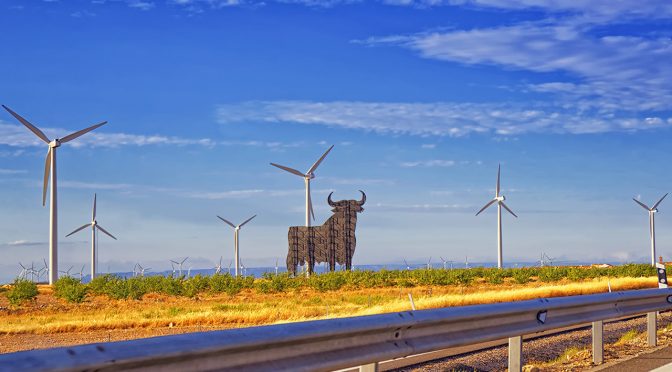Spain continues to take firm steps in its energy transition process. Proof of this is the data that emerges from 2021, the year in which renewable energies have once again improved their marks, especially in the case of solar photovoltaics. In this way, over the past year the installed capacity of this technology has increased by almost 30% (28.8%), incorporating more than 3,300 MW to the national generation park. This impulse has allowed its electricity production to experience an increase of close to 37% (36.7%) as stated in the Preview of the Spanish electricity system report 2021, a document that Red Eléctrica de España publishes annually with the main magnitudes of the sector in our country and which was presented at a ceremony held today.
For the president of Red Eléctrica, Beatriz Corredor, “the ecological transition is more necessary today than ever. It is the only way to achieve energy sovereignty in Europe and is the indisputable lever of the recovery that lies ahead. We have been working on this path for years and the data for 2021 is an unequivocal sign that we are advancing at a good pace and with a firm step. And an essential instrument to promote this transition will be the 2021-2026 Electricity Planning, which will be approved shortly and will allow us to comply with the path established by the PNIEC”.
In 2021, renewable technologies continued to grow in the country’s generating park: at the end of the year, they represented 56.6% of the national production capacity (112,846 MW). In total, the national electricity system added more than 4,000 new renewable MW this past year, thus reaching 63,896 MW of green capacity.
According to the Advance report on the Spanish electricity system 2021, one in four MW installed in our country is from wind generation, a technology that has increased its presence by 2.5% compared to 2020 and that as of December 31 already had 28,175 MW in service. For its part, photovoltaic is the one that has experienced the greatest increase -as indicated above-, 28.8% more than in 2020, reaching 15,048 MW.
Coal reduces its installed power by almost 2,000 MW and is the star of the year’s biggest drop, as its capacity decreases by 34.3% compared to 2020.
After wind power, which is the technology with the greatest installed power in the country, come the combined cycle, with 26,250 MW (23.3% of the total), hydroelectric, with 17,094 MW (15.1%) and solar photovoltaic ( 13.3%).
Renewable generation record
This renewable transformation of the national generation park has also boosted electricity generation from green energies in 2021. In total, these technologies produced 121,305 GWh, 9.7% more than in 2020. With this volume, renewables reached last year the record share of 46.7% of the national total. In this sense, the also record production achieved by wind power stands out, which, with 60,485 GWh generated, is the leading technology in the 2021 mix with a share of 23.3%. Thus, thanks to the wind, wind power has produced 10.2% more electricity than in the previous year.
After wind power, the next technology with the largest share in the generation structure is nuclear, which generated 3.1% less than in 2020 and reached a share of 20.8%. They are followed by the combined cycle (17.1%), hydraulic (11.4%) and solar photovoltaic. The latter has recorded 36.7% more GWh in the national system than the previous year and has exceeded the barrier of 20,000 GWh generated, registering a new maximum annual production in this 2021, in which it has been responsible for 8 % of the mix.
For its part, coal continued its decline also in 2021, the year in which its production was 0.7% lower than that of 2020, which translates into a 1.9% share, a figure very far from that registered in 2007, when this technology generated almost a quarter of the total in our country.
This greater presence of renewables in the production mix during 2021 has favored the reduction of CO2 eq. associated with electricity production, registering in 2021 the historical minimum of emissions: they stood at 35,906,581 tCO2 eq., the historical minimum at the national level.
Demand increases by 2.5% and network availability stands at 98.5%
In 2021, the demand for electricity has advanced in its recovery after the impact of the pandemic. Specifically, consumption stood at 256,387 GWh, which represents an increase of 2.5% compared to 2020. Once the influence of working hours and temperatures has been corrected, the consumption data remain without significant variations and record also in an increase of 2.5% with respect to the previous year.


